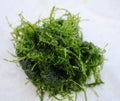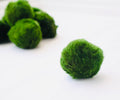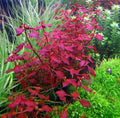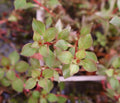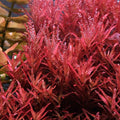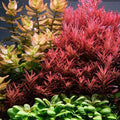Understanding and Preventing Plant Melt
Today, we're going to be talking about plant melt—what it is, how to stop it if it's occurring, and how to prevent it if you're setting up a new tank and transferring plants. I've got examples, tips, and tricks that you probably haven't heard before, and hopefully, I can help save your plants, time, money, and effort.
What is Plant Melt?
Let’s jump right in. Plant melt is when your aquatic plants suddenly start looking wilted, limp, and unhealthy. So what went wrong?
Understanding the Source of Plant Melt
Almost all plants in our hobby are actually grown on land, even though we use them underwater.
Plants are typically grown
-
In trays with roots submerged in nutrient-rich water, but foliage in open air
-
In tissue culture cups with jelly-like nutrients and proteins
These plants receive all the CO₂ and oxygen they need from the air and all the fertilizer from below. This allows them to grow quickly. But when you move them into a tank, it's a totally different environment—they're underwater, and that means different challenges.
Why Do Plants Melt?
When you submerge these plants, they enter a state of shock. Their leaves, grown for air exposure, are no longer able to function properly underwater.
This is especially true for:
-
Crypts
-
Sword ferns
-
Ludwigia
-
And many others
Their leaves start to disintegrate, and the plant begins to redirect its energy to roots, rhizomes, or stems.
How to Stop Melt Once It’s Happening
-
Trim Dead Tissue
Cut off all dying or dead leaves to allow the plant to focus on new growth. Don’t be afraid to leave just a little “stick” left—new growth is coming. -
Clean Leaves
Remove any substrate dust or algae that’s settled on leaves. This helps the plant “breathe” and better absorb nutrients. -
Promote New Growth
Look for signs of new growth and cut off decaying stems. Plants will regrow from roots, crowns, or rhizomes. -
Maintain Tank Conditions
-
Stable water parameters
-
Clean substrate (but not deep vacuumed)
-
Regular water changes
-
Ammonia control
-
Use CO₂ If Available
If it’s a high-tech tank, running CO₂ helps provide the carbon plants need.
Preventing Plant Melt Before It Starts
Source Matters
Get your plants from reliable sources. Make sure they’re vibrant, healthy, and pest-free.
Active Substrate
Use a nutrient-rich substrate. As the plants transition, their roots will do most of the work.
Fertilizer & Light
Feed the plants with a good liquid fertilizer and ensure they’re getting 8+ hours of light per day. The deeper your tank, the more powerful your light needs to be.
Clean the Tank
Avoid algae, detritus, and dust buildup. Don’t overcrowd plants—space them out to avoid shading each other.
Water Movement
Water surface agitation helps oxygen and CO₂ exchange. A well-circulated tank supports healthy plant metabolism.
Important Tips
-
Don’t Move Your Plants
If they're melting, resist the urge to move them. Let them acclimate. -
Add Clean-Up Crew
Shrimp and non-plant-eating snails can help clean up dead tissue and algae. -
CO₂ and Lighting Balance
Too much light without enough CO₂ = weak, spindly growth. Balance your inputs! -
Water Changes
Especially in new tanks, change up to 80% of the water every few days (if no fish are present) to remove excess ammonia.
Wrapping It Up
Plant melt is frustrating, but it’s also totally manageable. Once you understand why it happens and what your plants are experiencing, you can:
-
Trim and clean them properly.
-
Balance CO₂, light, and nutrients
-
Maintain stable, clean water
-
Watch them bounce back better than before.



